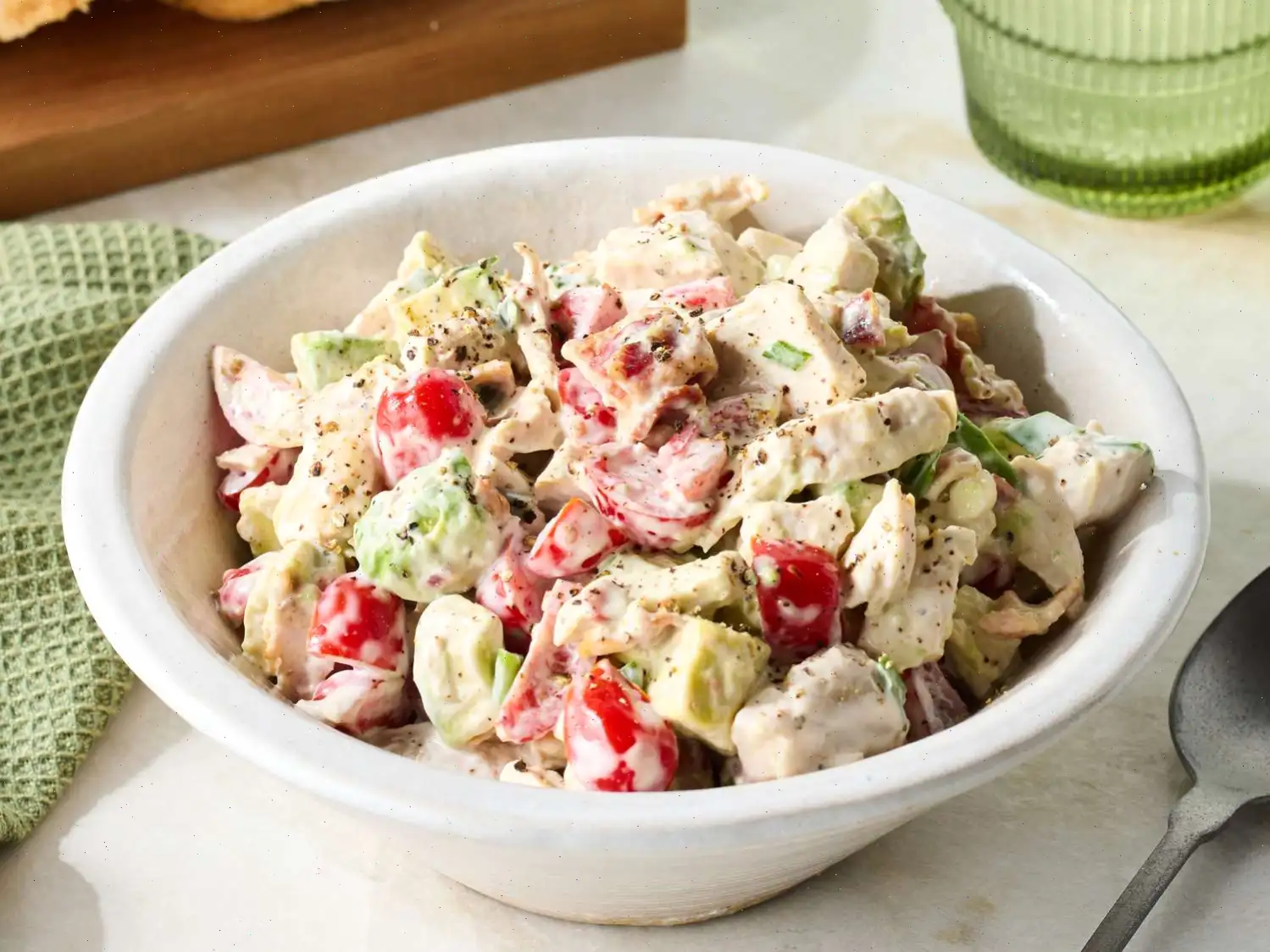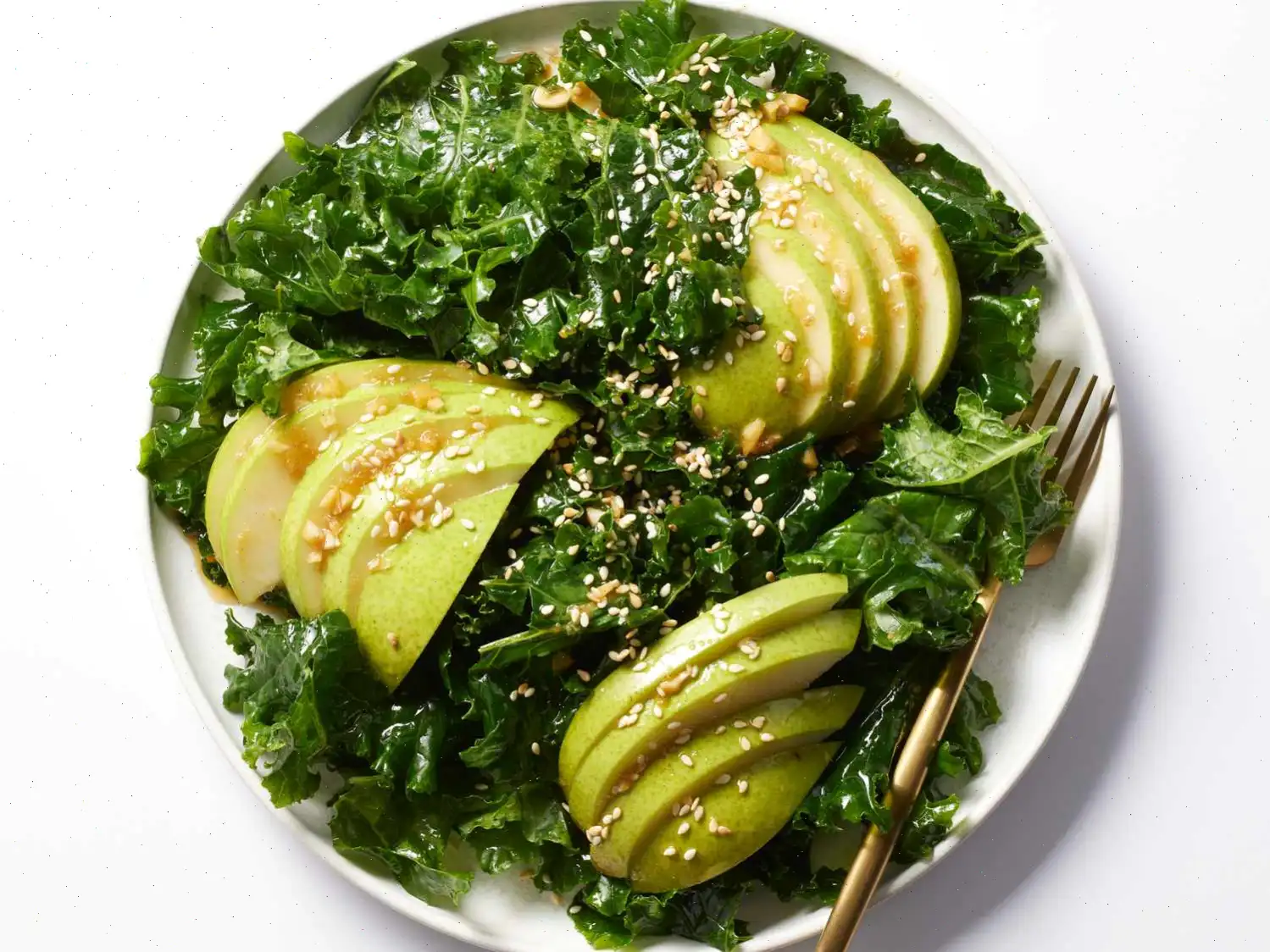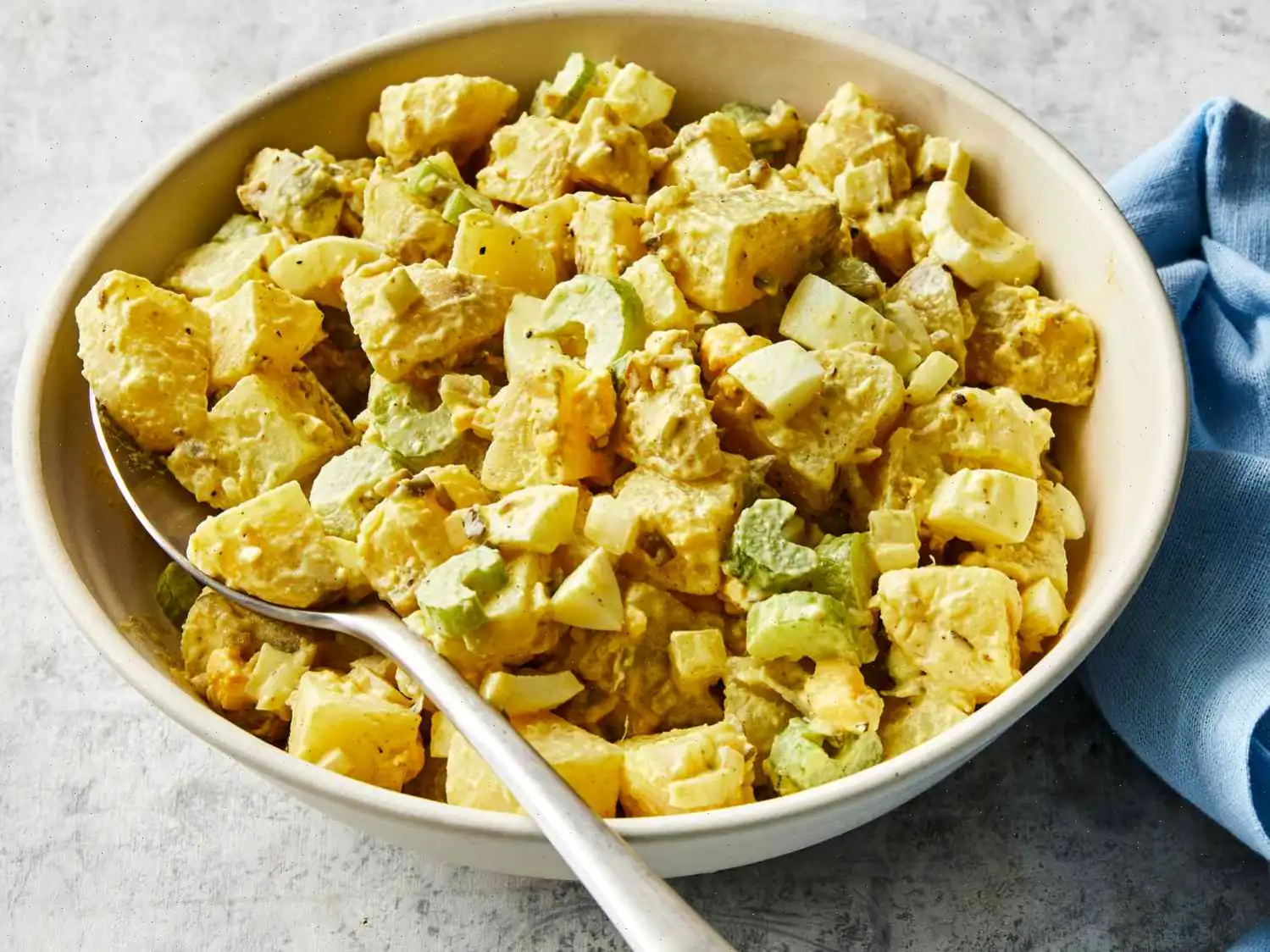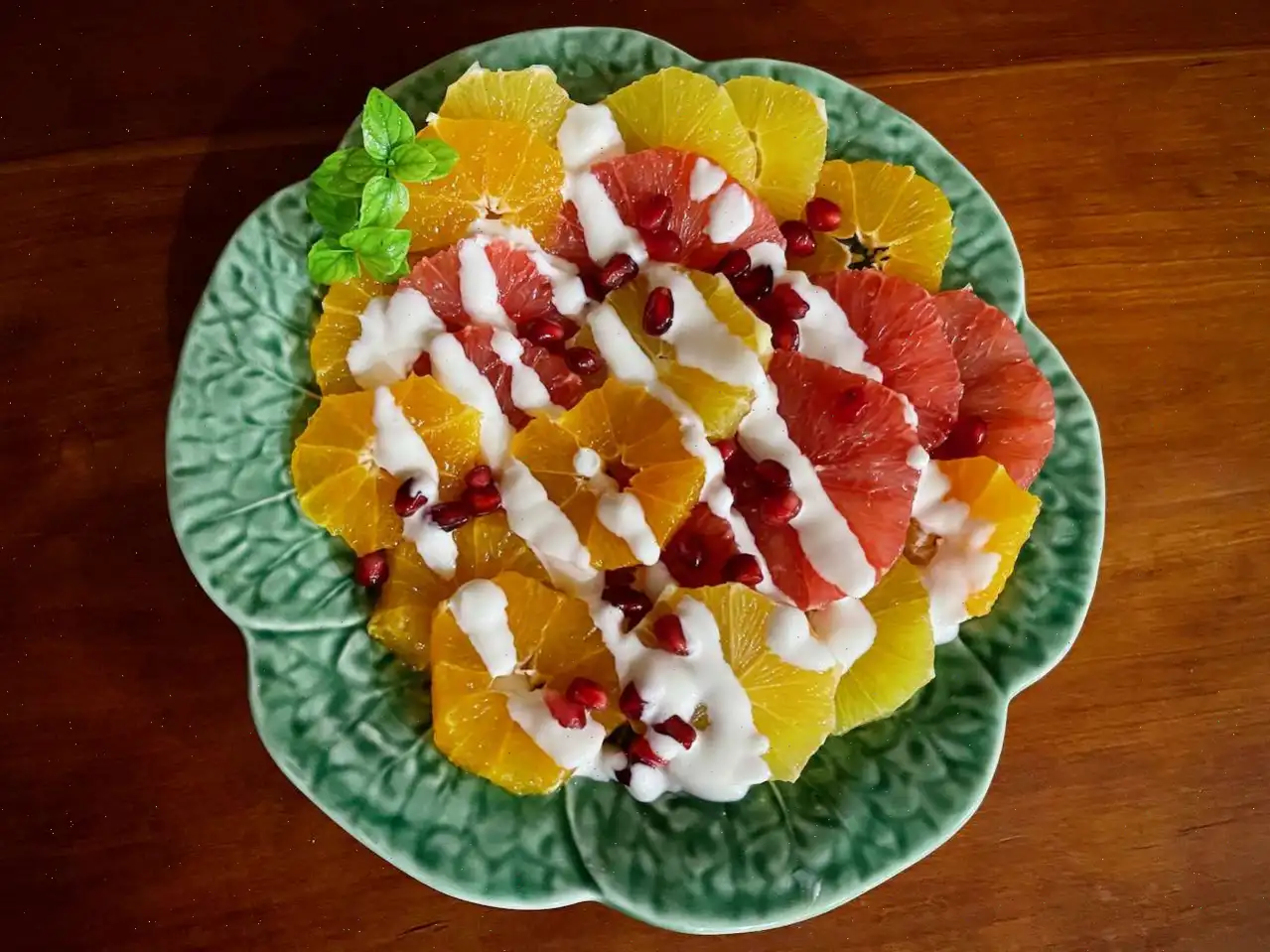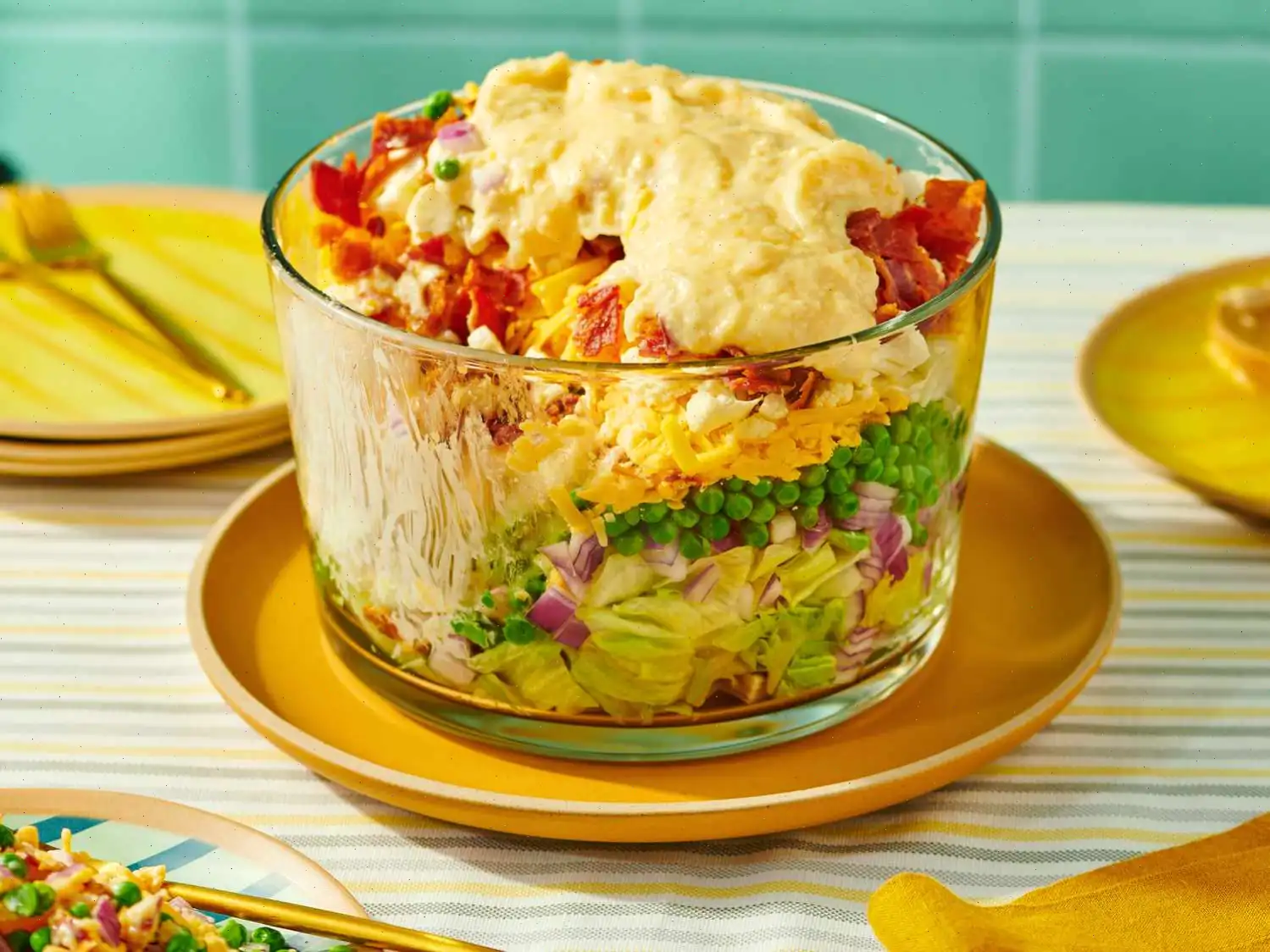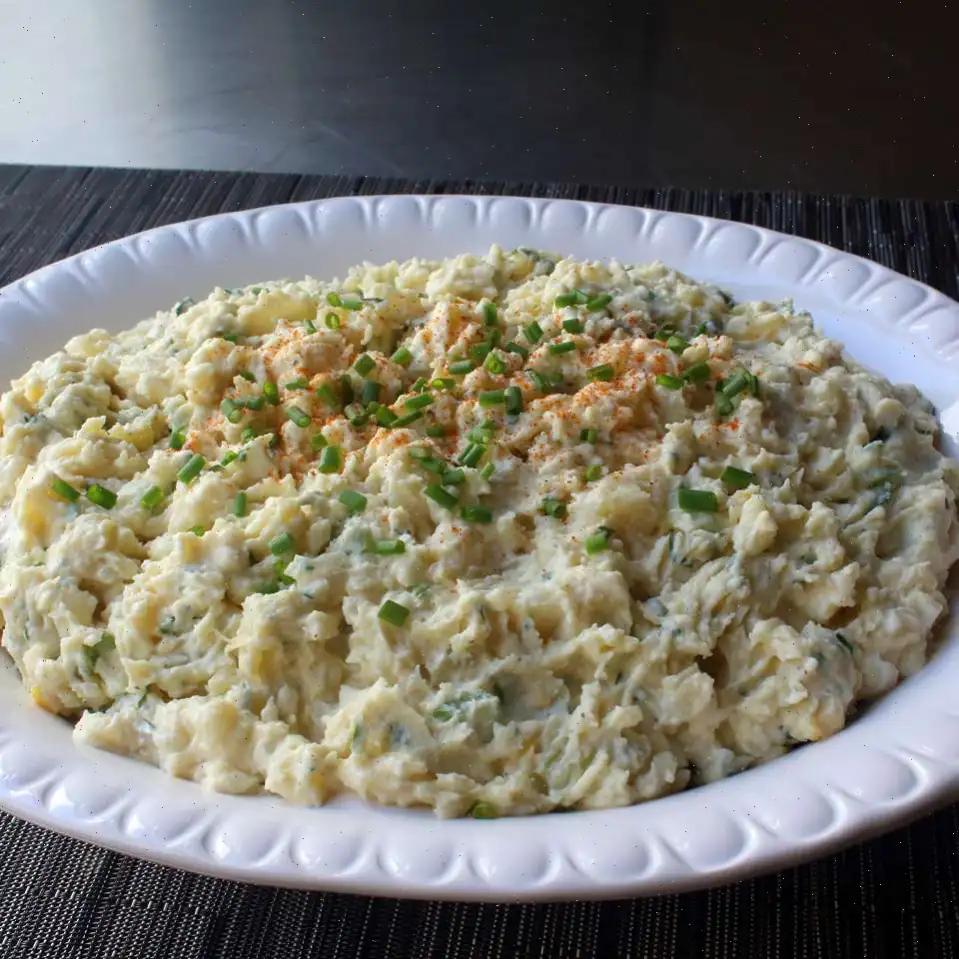
Apple, Raisin, and Carrot Slaw Recipe
Ingredients
This recipe yields 8 servings. Ingredients are automatically scaled, but cooking times remain the same. Original recipe makes 8 portions.
- 1/3 cup yogurt (Icelandic Skyr or similar)
- 1/3 cup light mayonnaise
- 1 tablespoons cider vinegar
- 1 tablespoon poppy seeds
- 1 teaspoon Dijon mustard
- teaspoon salt
- teaspoon black pepper
- 5 cups chopped or shredded cabbage
- 1/3 cup julienned carrot
- 2 cups diced red apple (unpeeled)
- 1/2 cup golden raisins
- Fresh parsley for garnish
Directions
- In a large bowl, whisk together yogurt, mayonnaise, cider vinegar, poppy seeds, Dijon mustard, salt, and black pepper until smooth and creamy.
- Add the chopped cabbage, julienned carrot, diced apple, and golden raisins. Toss gently until all ingredients are evenly coated with the dressing.
- Transfer to a serving dish and garnish with fresh parsley.
- For best flavor, refrigerate for at least 1 hour before serving to allow the flavors to meld.
Cook's Tip
Chilling the coleslaw enhances the flavors, giving it a more refreshing and cohesive taste.
Nutrition Facts (per serving)
- Calories: 107
- Total Fat: 3g (4% DV)
- Saturated Fat: 0g (2% DV)
- Cholesterol: 2mg (1% DV)
- Sodium: 247mg (11% DV)
- Total Carbohydrates: 20g (7% DV)
- Dietary Fiber: 3g (12% DV)
- Sugars: 13g
- Protein: 3g (5% DV)
- Vitamin C: 38mg (42% DV)
- Calcium: 81mg (6% DV)
- Iron: 1mg (3% DV)
- Potassium: 333mg (7% DV)
*Percent Daily Values are based on a 2,000 calorie diet. Your daily values may be higher or lower depending on your calorie needs. Nutrient information may not be available for all ingredients; consult a dietitian if you have dietary restrictions.
The History and Heritage of Apple, Raisin, and Carrot Slaw
The Apple, Raisin, and Carrot Slaw is a modern twist on traditional coleslaw, a dish whose origins date back to 18th-century Europe. The basic concept of finely shredded cabbage mixed with a creamy dressing traveled across the Atlantic with European immigrants and evolved into various regional styles in America. Incorporating apples and raisins adds a sweet contrast to the crisp vegetables, reflecting the American penchant for balancing savory and sweet flavors in side dishes. Carrots were later added not only for color and texture but also for their nutritional value, creating a vibrant, refreshing salad.
Regional Variations
This slaw showcases regional adaptations, particularly in the United States. In the Southern states, it is common to use a vinegar-based dressing with a hint of mustard and sugar, while Northern recipes often emphasize creamy mayonnaise or yogurt. Some coastal regions incorporate seasonal fruits like apples or dried raisins, taking advantage of local produce. The combination of yogurt and mayonnaise in this recipe represents a contemporary, health-conscious approach that maintains the creamy texture while reducing fat content.
How It Differs from Similar Dishes
While many coleslaws rely solely on cabbage and a creamy dressing, this recipe is distinct for its inclusion of apples and golden raisins, which provide a naturally sweet and slightly tangy flavor. Unlike traditional coleslaw that may use only cabbage and carrot, the addition of fruit gives this dish a layered taste profile, combining crisp, juicy, and chewy textures in a single bite. It also differs from Waldorf salad, which uses apples and nuts but rarely cabbage, making this slaw unique in its balance of savory and sweet with a vegetable base.
Where It Is Typically Served
Apple, Raisin, and Carrot Slaw is commonly served as a side dish alongside grilled meats, fish, or barbecue, adding a refreshing counterpoint to heavier main courses. It is also a popular addition to holiday tables and picnic spreads due to its vibrant color and easy preparation. Restaurants that specialize in comfort food or Southern cuisine often feature this slaw as a topping for sandwiches or as part of a salad platter.
Interesting Facts
- The use of poppy seeds in the dressing is a nod to Eastern European culinary traditions, where poppy seeds have long been used to add subtle flavor and crunch.
- Chilling the slaw for at least an hour before serving enhances the melding of flavors, making the dish even more flavorful and cohesive.
- This slaw is naturally rich in fiber and vitamin C, thanks to the combination of cabbage, carrots, and apples, making it both delicious and nutritious.
- Historically, adding raisins to salads became popular in American cuisine in the early 20th century as dried fruits became more widely available and affordable.
- The balance of creamy, sweet, and tangy elements in this slaw mirrors the broader American approach to side dishes: versatile, colorful, and flavorful enough to complement a variety of mains.
FAQ about Apple, Raisin, and Carrot Slaw Recipe
Comments
Mark Baker
07/30/2024 01:39:39 PM
Excellent recipe! My friends absolutely adored it and requested that I prepare it again for our upcoming gathering.
Jack Diaz
08/03/2022 09:31:04 AM
Absolutely mouthwatering flavors!



